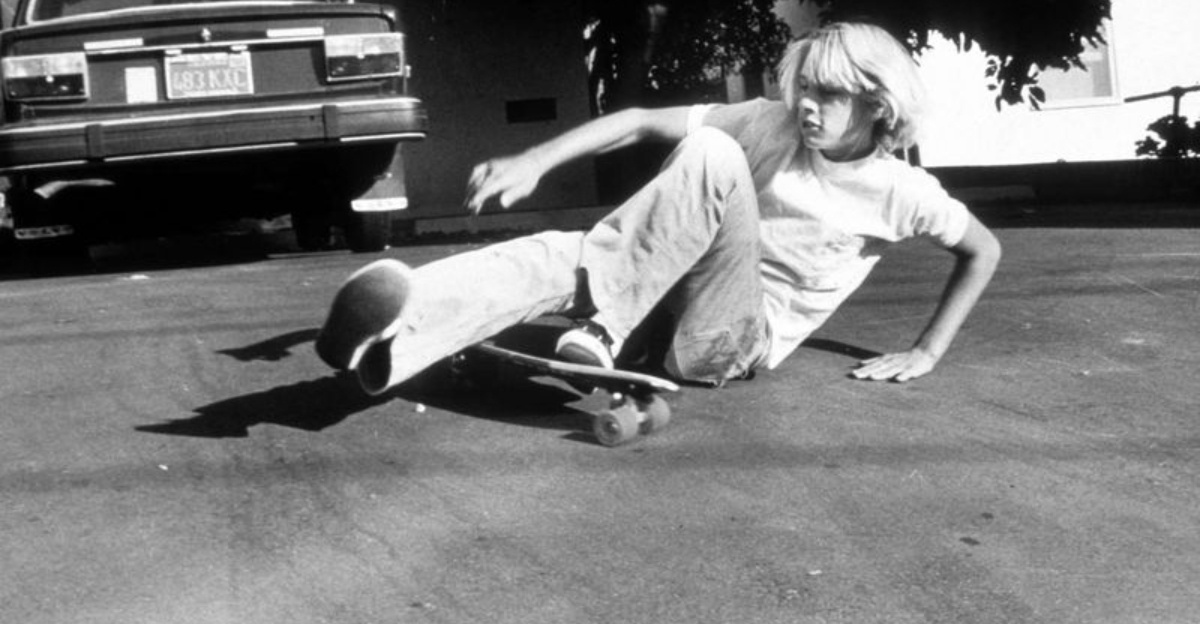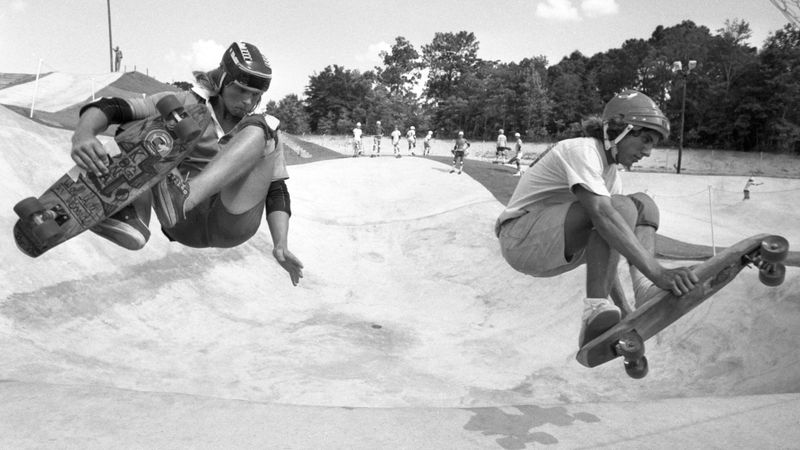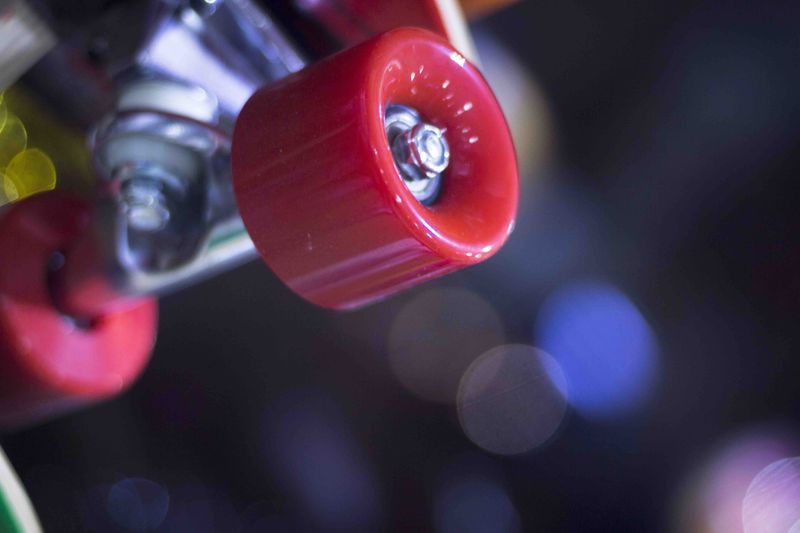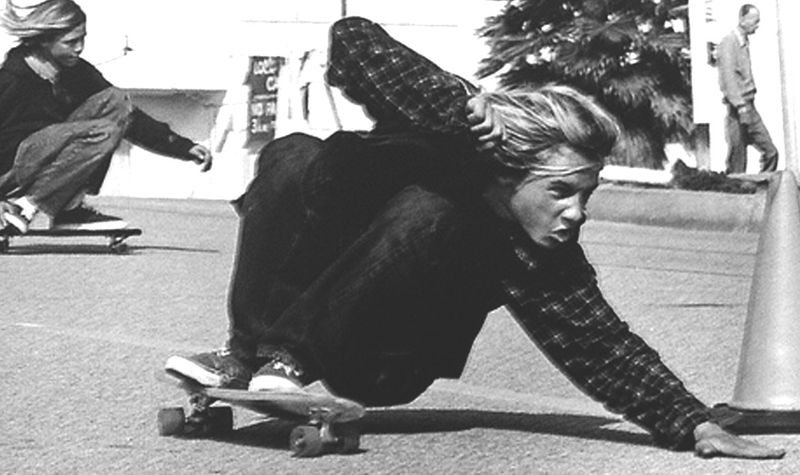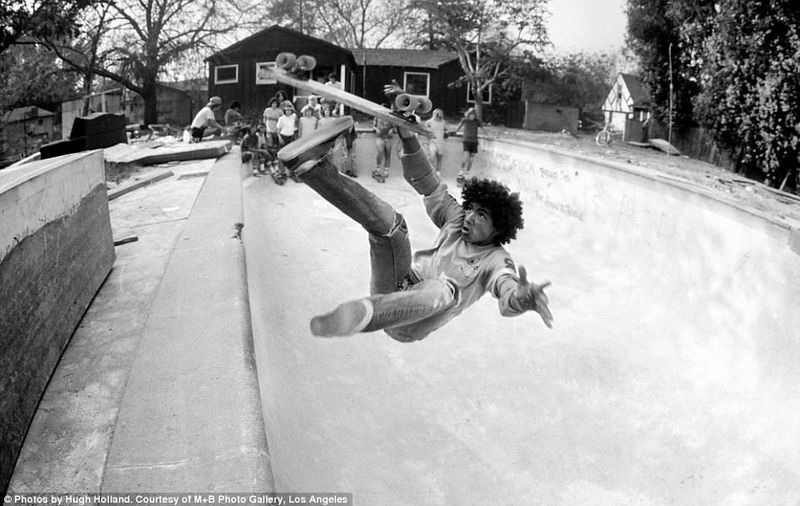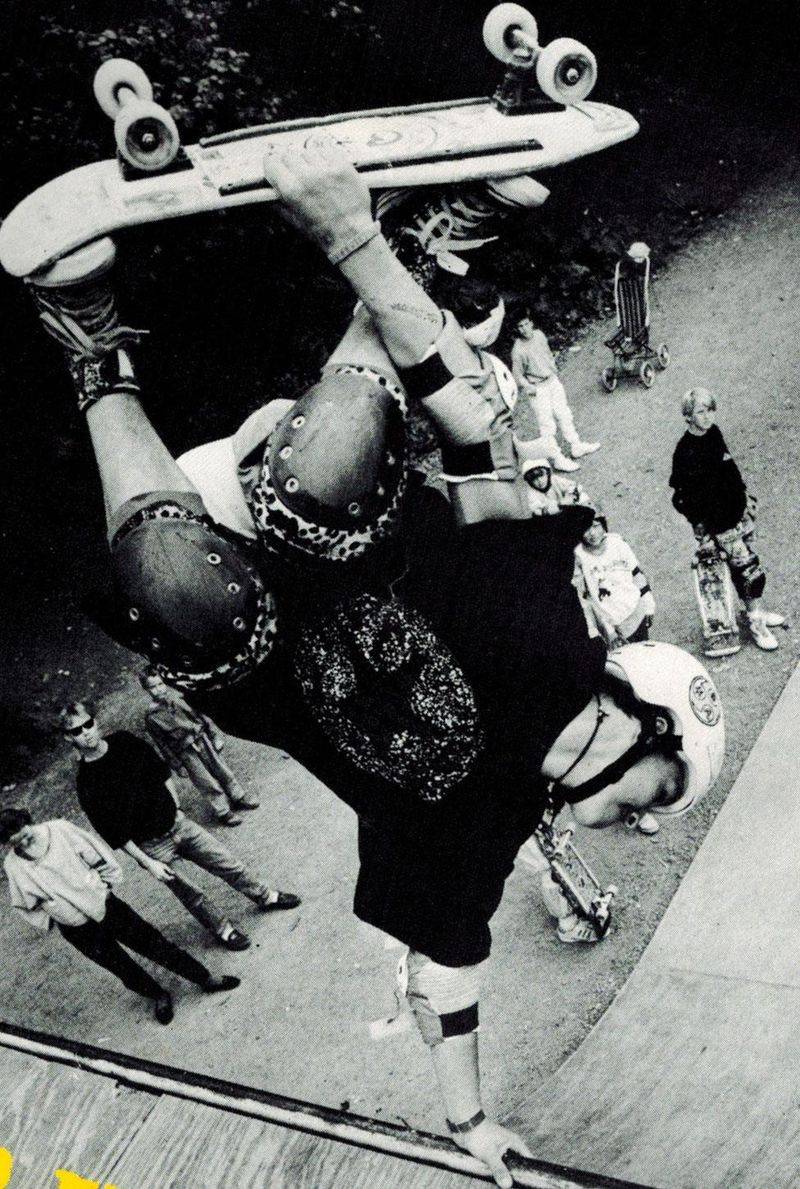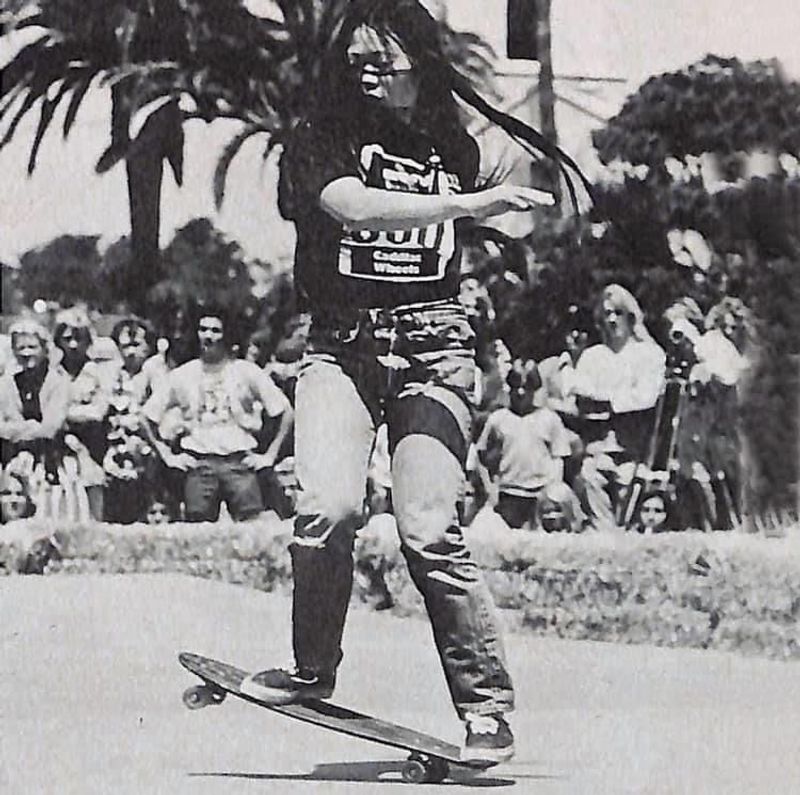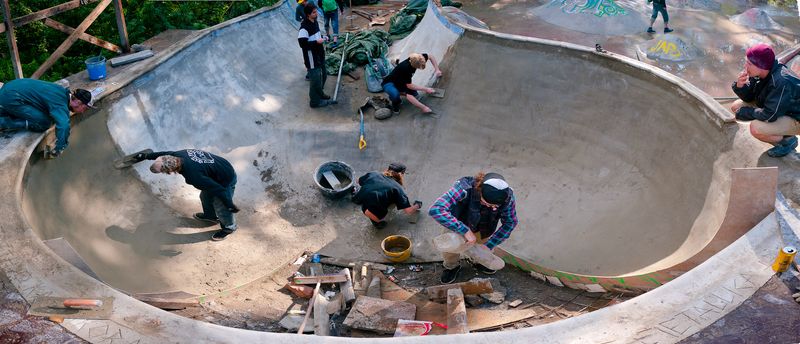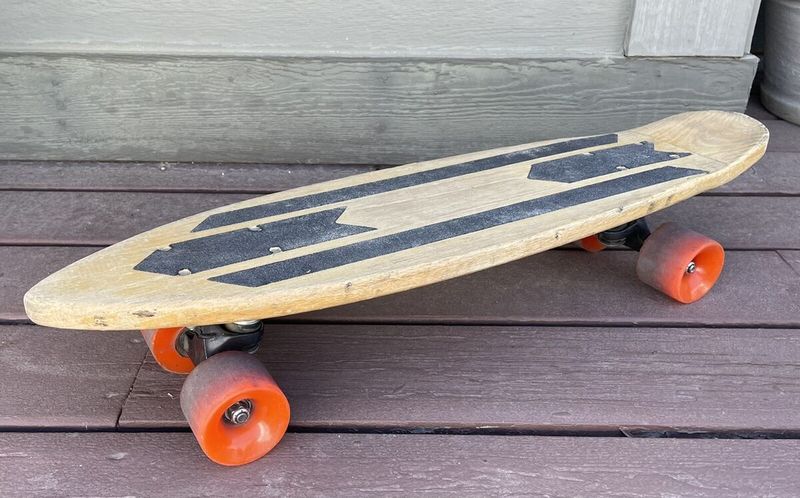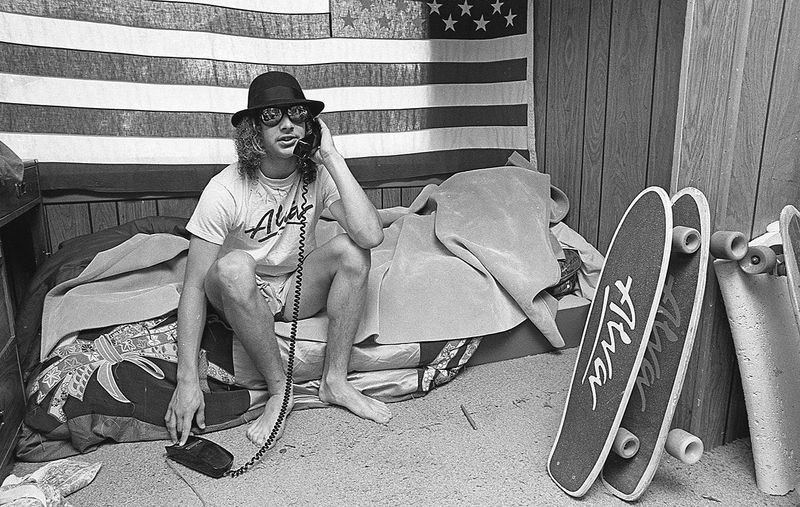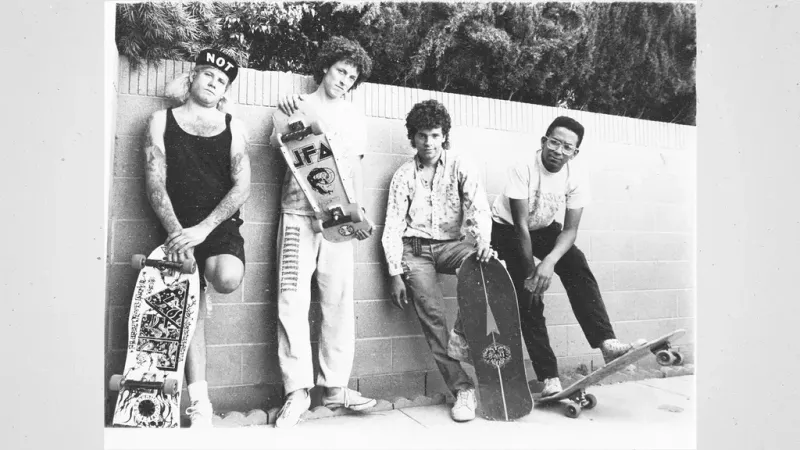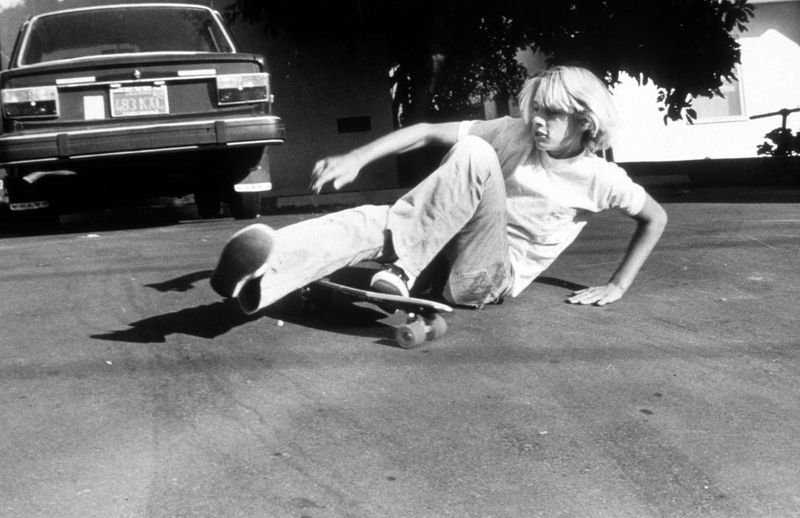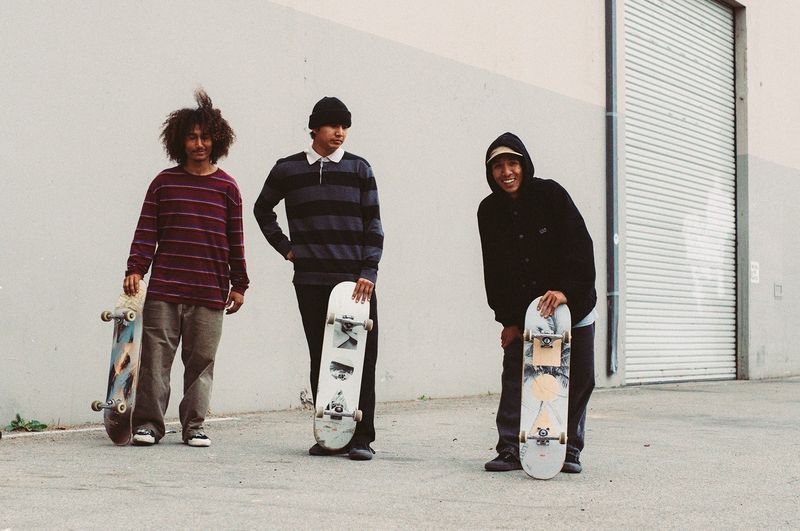The 1970s didn’t just bring bell bottoms and disco—it sparked a countercultural movement that turned sidewalks into skateparks and rebels into legends. The skateboard revolution of the ’70s changed everything, and chances are, there’s a lot you never knew about this radical ride into history.
1. Skateboarding Was Basically Dead by 1970
By 1970, skateboarding was facing a steep decline. The initial craze of the ’60s had waned, leaving skate shops shuttered and parks deserted. Many viewed it as a passing fad, destined to fade into obscurity. Yet, the spirit of skateboarding lingered in the hearts of a few dedicated enthusiasts. These pioneers would reignite the flame, setting the stage for the revolution to come. Nostalgia for the thrill and freedom kept the dream alive, waiting for the right moment to resurface. A new generation was about to rediscover the joy of skating, transforming sidewalks into arenas of innovation.
2. Polyurethane Wheels Changed Everything
The invention of the polyurethane wheel in 1973 revolutionized skateboarding. Frank Nasworthy’s creation brought newfound speed and control, transforming the skating experience. Suddenly, skaters could glide over rough surfaces with ease, opening a world of possibilities. This innovation propelled skateboarding into a modern era, attracting thrill-seekers looking for the next big thing. It was a game-changer, turning ordinary boards into high-performance machines. The polyurethane wheel didn’t just enhance skating; it redefined it. Skaters everywhere could now push boundaries, explore new terrains, and elevate their craft to unprecedented heights.
3. The Z-Boys Rewrote the Rules
Venice Beach’s Zephyr Team, famously known as the Z-Boys, transformed skateboarding with a distinctive surf-inspired style. These young rebels brought attitude and flair to the streets, challenging traditional norms. With aggressive turns and low crouches, they injected a new energy into the sport. The Z-Boys didn’t just skate; they crafted a cultural movement. Their influence rippled worldwide, inspiring countless skaters to defy conventions. They elevated skating into an art form, fusing creativity with athleticism. This legendary crew didn’t just rewrite the rules; they authored a new chapter in skateboarding history.
4. Empty Pools Became Secret Skate Havens
The California drought of the ’70s birthed a rebellious skate culture. Empty backyard pools became sacred grounds for adventurous skaters. These makeshift skateparks offered new terrains to explore, encouraging innovation. Skaters trespassed and drained pools, transforming them into arenas of daring feats. The smooth, curved surfaces provided the perfect canvas for tricks, pushing the limits of what was possible. These hidden havens became hotspots for creativity and camaraderie, solidifying skateboarding’s status as a countercultural movement. The pool sessions of the ’70s were more than just recreation—they were a revolution.
5. Skateboarding Was Still Illegal in Many Cities
Despite its growing popularity, skateboarding remained illegal in many cities during the ’70s. Authorities viewed it as a public nuisance and a threat to safety. Skaters faced fines and confiscations, yet their passion was undeterred. They continued to ride, pushing back against restrictions. This defiance fueled the sport’s rebellious image, attracting a new wave of enthusiasts. The tension between skaters and law enforcement became a defining element of the era. Skateboarding’s outlaw status only added to its allure, making it a symbol of youthful rebellion and freedom.
6. Girls Ripped, Too—But Got Ignored
In the male-dominated skate scene of the ’70s, female skaters were breaking barriers. Pioneers like Peggy Oki demonstrated incredible skill, but recognition was scarce. The spotlight often shined on their male counterparts, leaving talented women in the shadows. Yet, these trailblazers persevered, carving out their own space in the skateboarding world. They inspired future generations of female skaters, proving that passion knows no gender. Despite limited coverage, their influence was undeniable. Women were not just participants; they were innovators, redefining what it meant to be a skater in a man’s world.
7. Magazines and VHS Built the Culture
Before the digital age, magazines and VHS tapes were the lifeblood of skate culture. Publications like Skateboarder Magazine captured the essence of the sport, sharing stories of legends and innovations. VHS tapes spread tricks and styles, connecting skaters across the globe. These mediums fueled the passion, inspiring a new wave of enthusiasts. They provided a platform for the community to thrive, preserving the history and evolution of skateboarding. The impact was profound, shaping the identity of the sport and its followers. Magazines and VHS were more than media; they were cultural cornerstones.
8. DIY Skateparks Popped Up Everywhere
Before the rise of commercial skateparks, DIY setups became the heartbeat of the skateboarding community. Resourceful skaters built ramps and bowls in backyards and abandoned lots, crafting unique terrains for their passion. These makeshift parks fueled creativity, allowing skaters to experiment and push limits. Each DIY park was a testament to ingenuity and dedication, fostering a spirit of collaboration and innovation. They became gathering spots for like-minded enthusiasts, nurturing the skateboarding culture. The DIY philosophy embodied the essence of skateboarding—a blend of creativity, resilience, and rebellion.
9. The First Skateparks Were Terrifying
The advent of commercial skateparks in the ’70s introduced a new dimension to skateboarding. Parks like Carlsbad, opened in 1976, were thrilling yet daunting. With steep walls and rough surfaces, they posed significant challenges for skaters. Safety standards were minimal, adding an element of danger to every ride. Yet, these parks were exhilarating playgrounds for those seeking adrenaline and adventure. They represented a pivotal moment in skate history, offering dedicated spaces for the sport to flourish. Despite the risks, early skateparks became iconic landmarks, symbolizing the fearless spirit of ’70s skateboarding.
10. Protective Gear Was an Afterthought
In the ’70s, protective gear was more of a novelty than a necessity. Skaters embraced the thrill of the ride, often forgoing helmets and pads. Vans shoes and cutoff shorts were the uniform, prioritizing style over safety. This carefree attitude led to frequent injuries, with road rash seen as a badge of honor. Despite the risks, skaters relished the freedom and spontaneity of the era. The lack of gear didn’t deter their passion; it fueled it. Skaters thrived on the edge, embodying the rebellious essence of the ’70s skateboarding movement.
11. The Boards Were Wildly Different
The skateboards of the ’70s were a stark contrast to today’s sleek designs. Decks were short, narrow, and crafted from materials like solid oak or fiberglass. These unique boards defined an era of experimentation and innovation. Each design offered distinct challenges and opportunities, influencing the way skaters rode. The diversity of boards reflected the evolving nature of the sport, encouraging skaters to adapt and innovate. These vintage boards were more than just equipment; they were symbols of the skateboarding revolution, representing a time of bold exploration and creativity.
12. There Were Skateboarding Superstars
The ’70s birthed skateboarding superstars who captivated audiences and inspired a generation. Figures like Tony Alva, Jay Adams, and Stacy Peralta became household names, gracing magazine covers and drawing crowds. Their charisma and skill elevated skateboarding to new heights, transforming them into cultural icons. These pioneers weren’t just athletes; they were trailblazers, pushing the boundaries of what’s possible. Their influence extended beyond skateboarding, shaping fashion, music, and lifestyle. The superstars of the ’70s left an indelible mark, igniting a passion that continues to resonate across generations.
13. Corporate America Didn’t Get It
In the ’70s, corporate America struggled to understand the essence of skateboarding. Early sponsors often attempted to sanitize the raw, rebellious nature of the sport. This disconnect led to tension, as skaters pushed back against attempts to commercialize their passion. The skate community rejected inauthentic portrayals, striving to keep it real and unfiltered. Despite the misunderstandings, this resistance solidified the sport’s underground status. Skaters embraced the counterculture identity, cherishing their independence. The clash with corporate interests highlighted skateboarding’s unique spirit, a blend of rebellion and authenticity that couldn’t be tamed.
14. Skateboarding Had Its Own Soundtrack
The soundtrack of the ’70s skateboard revolution was as diverse and dynamic as the sport itself. Punk rock, surf rock, and funk provided the beats that fueled every ride. Skaters embraced these genres, which mirrored their rebellious and free-spirited nature. Music became an integral part of skate culture, influencing styles and attitudes. The vibrant sounds of the era were more than just background noise; they were anthems of a movement. Skateboarding and music were intertwined, each amplifying the other’s energy. Together, they crafted a soundtrack that defined a generation of skaters.
15. Some Skaters Got Famous Off Commercials
In the ’70s, skateboarding’s growing popularity caught the attention of advertisers. Brands like Pepsi and Levi’s incorporated skaters into their campaigns, tapping into the sport’s cool factor. Some skaters gained brief fame from these commercials, showcasing their skills to a wider audience. While the exposure was significant, the financial rewards were often minimal. Skaters remained true to their roots, valuing passion over profit. Despite the commercial success, they stayed grounded in the culture that defined them. The intersection of skateboarding and advertising was a fascinating chapter, blending commerce with counterculture.
16. The ’70s Sparked Global Skate Culture
The influence of ’70s skateboarding extended far beyond California’s shores. As videos and magazines traveled overseas, skaters worldwide embraced the movement. From Europe to Japan, enthusiasts replicated the Venice Beach vibe, adding their unique flair. This global expansion fostered a diverse community, united by a shared passion. Skateboarding transcended borders, becoming a universal language of expression and rebellion. The ’70s laid the groundwork for a worldwide phenomenon, inspiring future generations to ride. This era marked the beginning of skateboarding’s international journey, connecting cultures and creating a global skate culture.
17. Skateboarding Was Added to PE Classes
In the mid-1970s, skateboarding briefly rolled into California schools’ physical education programs. With the surf culture permeating coastal lifestyles, it seemed fitting to integrate skateboarding into gym classes. Students dashed and glided, embracing the new wave of excitement on wheels.
However, the enthusiasm was short-lived. Concerns about safety and the unpredictable nature of skateboards led to its rapid removal from the curriculum. Despite its fleeting presence, the inclusion marked an adventurous spirit of the era, showcasing a willingness to experiment with unconventional sports.
This glimpse of skateboarding in education highlighted the period’s dynamic cultural shifts.
18. Skateboarding Entered the Art World
Skateboarding didn’t just influence sport; it penetrated the art world too. Boards became canvases for self-expression, featuring bold designs and personal statements. Skaters embraced this creative outlet, blending art with athleticism. DIY zines and hand-painted decks showcased the individuality and innovation of the community. This artistic integration reflected the vibrant culture of the ’70s, where boundaries were pushed and norms challenged. Skateboarding’s entry into the art world was more than aesthetic; it was a statement of identity and creativity. The fusion of art and skateboarding continues to inspire and evolve.
19. Skating Influenced Fashion Big Time
The skateboarding culture of the ’70s left a lasting impact on fashion. Skaters’ distinctive style—high socks, striped tees, and Vans shoes—became iconic. This laid-back, rebellious look transcended skateboarding, influencing mainstream fashion. The aesthetic was about more than appearance; it embodied the carefree, adventurous spirit of the era. Skaters wore what they had with confidence, creating a unique identity. This fashion influence extended beyond the ’70s, shaping streetwear trends for decades. The style wasn’t just clothing; it was a statement, reflecting the individuality and freedom at the heart of skate culture.
20. It All Led to the Birth of Modern Skateboarding
The ’70s laid the groundwork for what skateboarding is today. The decade’s innovation, rebellion, and creativity set the stage for modern skateboarding. It was a time when boundaries were pushed, and new styles emerged. The legacy of the ’70s is visible in every trick and turn performed today. Without this transformative era, there would be no X Games, no Olympic skateboarding, and certainly no Tony Hawk Pro Skater. The spirit of the ’70s continues to inspire skaters, fueling the passion and progression of the sport. This was more than a revolution; it was a renaissance.
